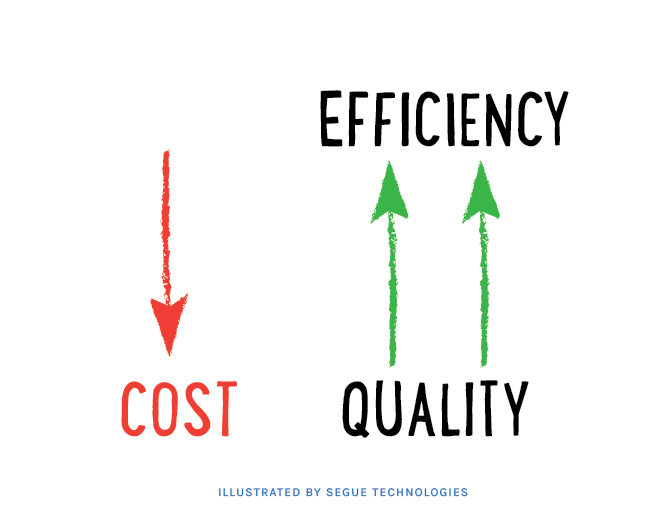Software testing is one of the most significant parts of developing website applications, data management, or mobile apps. Proper testing includes workflow planning, systematic review, fluid adjustments, consistent processes, internal and external quality training, and integrated communications between team members. To understand Quality Control and Assurance, check out The Difference Between Quality Assurance and Quality Control.
Workflow Planning
When developing software, your team needs to have systematic processes for planning and testing throughout the development lifecycle. It is imperative to define testing activities within each aspect of the workflow, including re-development/deployment. Re-doing work is never enjoyable, but it saves time and money to respond to glitches and other programming problems during the development phase, not after delivery. Your software testing needs to be integrated throughout the workflow so that issues are identified and addressed as close to the source and as early as possible.
Systematic Review
With testing as a part of the workflow planning, foundational reviews are possible for your software. Systematic reviews include communication between testing, design, coding teams, and the product owners. This communication creates an environment of positive productive testing with the goal of a bug-free release.
While many people are not used to the idea of releasing bug free programs, quality assurance and control work together to create as near-to-perfect a system and product as possible. Quality assurance focuses on the system, quality control on the product. Together they produce Quality Process Control, a systematic product testing and review from development through to maturity.
Fluid Adjustments
It is not enough that your software testing be good. If it is not received, understood, and acted on, your software will still come out glitchy. Fluid adjustments are established when your development teams have the ability, and commitment, to respond to each bug as it is found. When choosing a software partner, assess whether their adjustment process is designed to respond to testing at each level. How do they review the design process? When do they review coding? Do they have a means for testing partially complete apps?
Consistent Processes
Software testing must be predictable and consistent. It is too easy to rely on periodic or random testing in programming and coding, trusting that the programmers have done their job. A true quality process will include consistency in the testing commitments. Do the programmers test their own code before sending it down the line? When do disparate parts get put together and tested?
Creating consistent processes includes answers to the above processes. Consistency also creates a culture of commitment. Commitment to testing each aspect, each iteration of the program, and the end product before release. Your software testing must start from the beginning, continue through each aspect of development, and include customer response after release to enable further testing and development. Your testing team must have these processes in place, or be able to put them in place quickly.
Training
Testing and training are not often seen as compatible parts of development, but they are truly fundamental. Your software team has to train each member of the development process to look for problems, and to learn when and how to communicate them to the right team members. Additionally, your app users and study groups can be trained to establish testing patterns and commitment to quality control.
When the product is released, additional training prevents user created issues, and allows for further testing. Many times bugs are just a perceived problem in the eye of a user who expected one thing, but got another. Develop a training program before release (how to videos, wikis, documentation) and you will help to prevent the perception of bugs, while creating potential further testing mechanisms.
Integrated Communication
Communication is essential to any quality process, but it must be taught. Software tests are no good unless they are brought to the attention of people who can change them. Tests are great tools for communication, if your development teams and users are trained to give feedback.
With a commitment to quality control, your software testing will produce results. The process includes employees, developers, users, designers and more, and results in integrated development with better, faster, and cheaper results.
